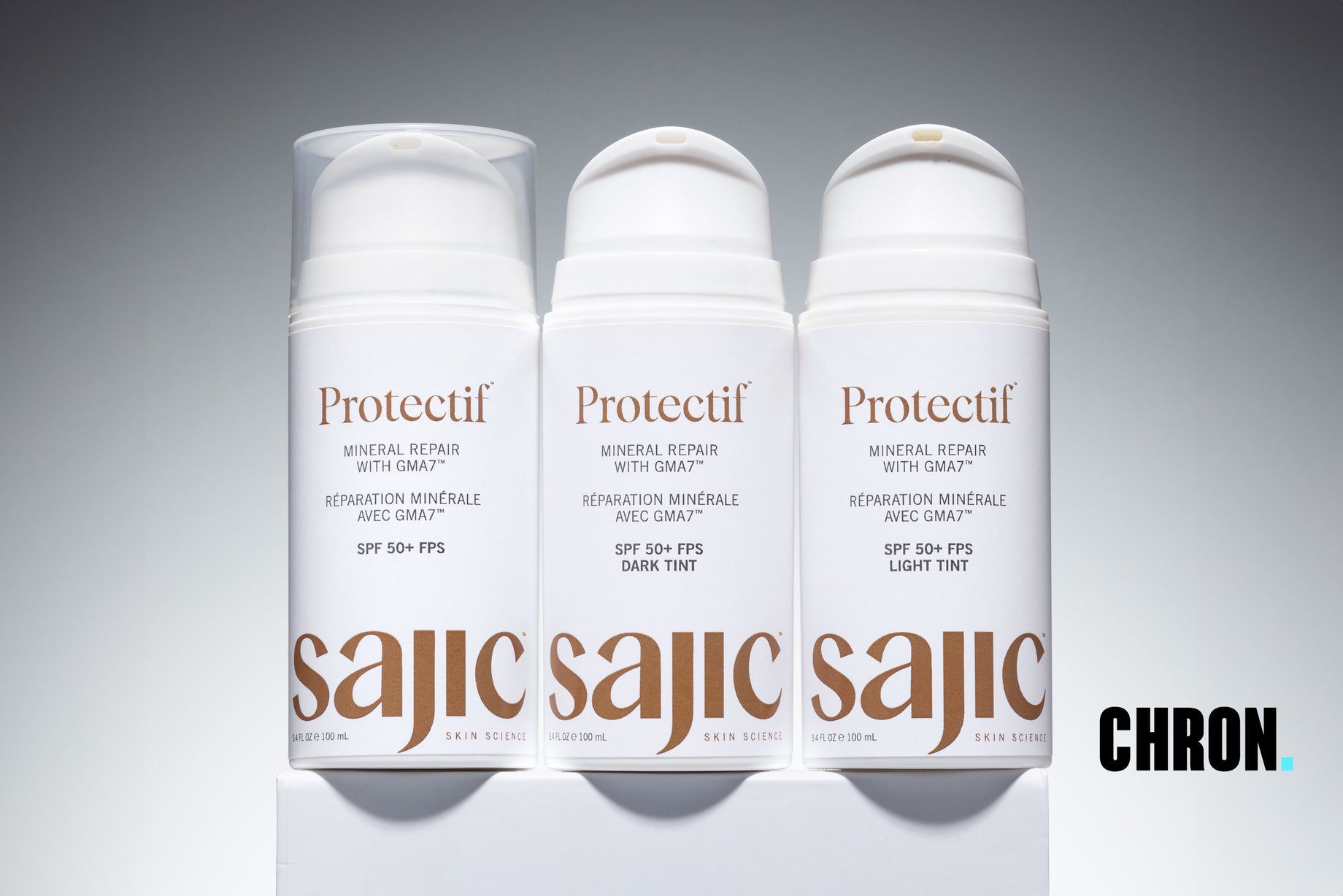Samina Nazarali
BMSc1 Dusan Sajic MD, PhD2
Journal of Cosmetic Dermatology, 03 Apr 2021, 21(1):405-406
DOI: 10.1111/jocd.14084 PMID: 33740839
Acne has a significant prevalence in the adolescent population, with over 95% of patients developing secondary scarring, for which there are currently suboptimal treatments.1•2 Permanent scarring is often the primary concern for patients, with continuously emerging data illustrating the significant impact it has on overall quality of life.1 An adolescent male presented to clinic with Grade 3 moderate severity acne, confined to the forehead with evidence of closed comedones, a combination of inflammatory papules and pustules, and macular erythema {Figure 1A). The patient was instructed to use adapalene 0.3%/benzoyl peroxide 2.5% and Compound A, a novel topical treatment that contains hydroxytyrosol, niacinamide, retinol, retinaldehyde, bakuchiol, green tea extract, and green coffee extract, for 8 weeks. Topical retinoid treatments have a welldocumented efficacy for the treatment of primary acne lesions, and it has been shown that adapalene 0.3%/benzoyl peroxide 2.5% not only prevents scar formation but can reverse early scars.3 During follow-up, it was ascertained he was not able to use the adapalene/ benzoyl peroxide combination more than three times per week secondary to irritation. Upon examination, it was evident that there was a significant reduction in the number of primary acne lesions; however, there were numerous new erythematous post-inflammatory scars {Figure 18).
Due to the irritation, a split-face trial with adapalene 0.3%/ benzoyl peroxide 2.5% being used on the right side of the forehead and Compound A on the left was started. Four weeks later, it was noted that Compound A was non-inferior and 8 weeks later, the left side treated with Compound A, had exhibited complete resolution of acne scarring compared to the adapalene 0.3%/benzoyl peroxide 2.5% treated side, which displayed two atrophic boxcar scars {Figure 2). This case reveals how rapidly scarring can develop, despite early treatment with a combination that was previously shown to not only reduce the risk of acne scar formation, but to reverse early scars. This highlights the importance for early intervention and elicits a need to better understand factors which make individuals more susceptible to future scarring.
Bakuchiol, an ingredient of Compound A, is an alternative agent to topical retinoids and has been found to have antiproliferative, anti-inflammatory, and anti-acne activity. Studies comparing retinol to bakuchiol have shown comparable efficacy4•5 ; however, bakuchiol has been shown to be better tolerated. Bakuchiol is associated with fewer cutaneous side effects, specifically decreased stinging and scaling of the skin, and is not associated with photosensitivity.4 Hydroxytyrosol, another component of Compound A, has similarly been shown to have anti-inflammatory and anti-aging effects.6 Niacinamide, a form of vitamin B3, provides potent antiinflammatory properties with a well-established safety profile. It is beneficial for individuals prone to post-inflammatory hyperpigmentation and has also been shown to improve acne lesion formation.7 Finally, green tea extract has anti-acne properties and can have a significant impact in normalizing microflora of the skin,8 an important component in the development of acne and subsequent scarring.

|
FIGURE 1 {A)
|
 |
FIGURE 2 Split-face application of adapalene 0.3%/benzoyl peroxide 2.5% on the right side of the face and Compound A on the left side after 8 weeks of use. Complete resolution of atrophic scarring on the left side, with evidence of 2 boxcar scars on the right |
These results are promising as the use of Compound A was shown to cause minimal skin irritation, potentially allowing for increased tolerability and thus, increased compliance. Additionally, as a topical application, it is more easily accessible compared to physical, surgical, and energy-based scarring treatments. Limitations include the split-face crossover design, as there may have been inadvertent transferring of the two treatments. Furthermore, the inability of the patient to tolerate daily application of the adapalene 0.3%/benzoyl peroxide 2.5% cream may have affected its efficacy. Finally, this was a single subject observation; long-term studies with more patients will be essential in further evaluating the efficacy and safety of this novel compound.
FUNDING INFORMATION
Derma Research Group
CONFLICT OF INTEREST
The study was supported by a grant from Derma Research Group, awarded to OS. OS has also received personal fees for advisory, speaking, consulting, research, and/or other ties with Galderma Laboratories, Novartis, Bausch, Leo Pharma, Concert Pharma. SN has no conflict of interest.
ETHICAL APPROVAL
Consent was taken from the patient to have the pictures taken.
Informed consent: Written informed consent was obtained from the patient for the publication of this case report. Subject approved the images and data used.
REFERENCES
- Werschler WP, Herdener RS, Ross VE, Zimmerman E. Treating acne scars: what's new? J Clin Aesthet Dermatol. 2015;8(8 Suppl):S2-S8.
- Thiboutot D, Gollnick H, Bettoli V, et al. New insights into the management of acne: an update from the Global Alliance to Improve Outcomes in Acne Group. J Am Acad Dermatol. 2009;60(5):S1-S50. https://doi.org/10.1016/j.jaad.2009.01.019
- Dreno B, Bissonnette R, Gagne-Henley A, et al. Long-term effectiveness and safety of up to 48 weeks' treatment with topical adapalene 0.3%/benzoyl peroxide 2.5% gel in the prevention and reduction of atrophic acne scars in moderate and severe facial acne. Am J Clin Dermatol. 2019;20(5):725-732. https://doi.org/10.1007/ s40257-019-00454-6
- Dhaliwal S, Rybak I, Ellis SR, et al. Prospective, randomized, doubleblind assessment of topical bakuchiol and retinol for facial photoageing. Br J Dermatol. 2019;180(2):289-296. https://doi.org/10.1111/ bjd.16918
- Chaudhuri RK, Bojanowski K. Bakuchiol: a retinol-like functional compound revealed by gene expression profiling and clinically proven to have anti-aging effects. Int J Cosmet Sci. 2014;36(3):221-
- https://doi.org/10.1111/ics.12117
- Jeon S, Choi M. Anti-inflammatory and anti-aging effects of hydroxytyrosol on human dermal fibroblasts (HDFs). Biomed Dermatol. 2018;2(1):21. https:/ /doi.org/10.1186/s41702-018-0031-x
- Walocko FM, Eber AE, Keri JE, AI-Harbi MA, Nouri K. The role of nicotinamide in acne treatment. Dermatol Ther. 2017;30(5):e12481. https://doi.org/10.1111/dth.12481
- Kim S, Park TH, Kim WI, Park S, Kim JH, Cho MK. The effects of green tea on acne vulgaris: a systematic review and meta-analysis of randomized clinical trials. Phytother Res. 2021;35(1):374-383. https://doi.org/10.1002/ptr.6809






